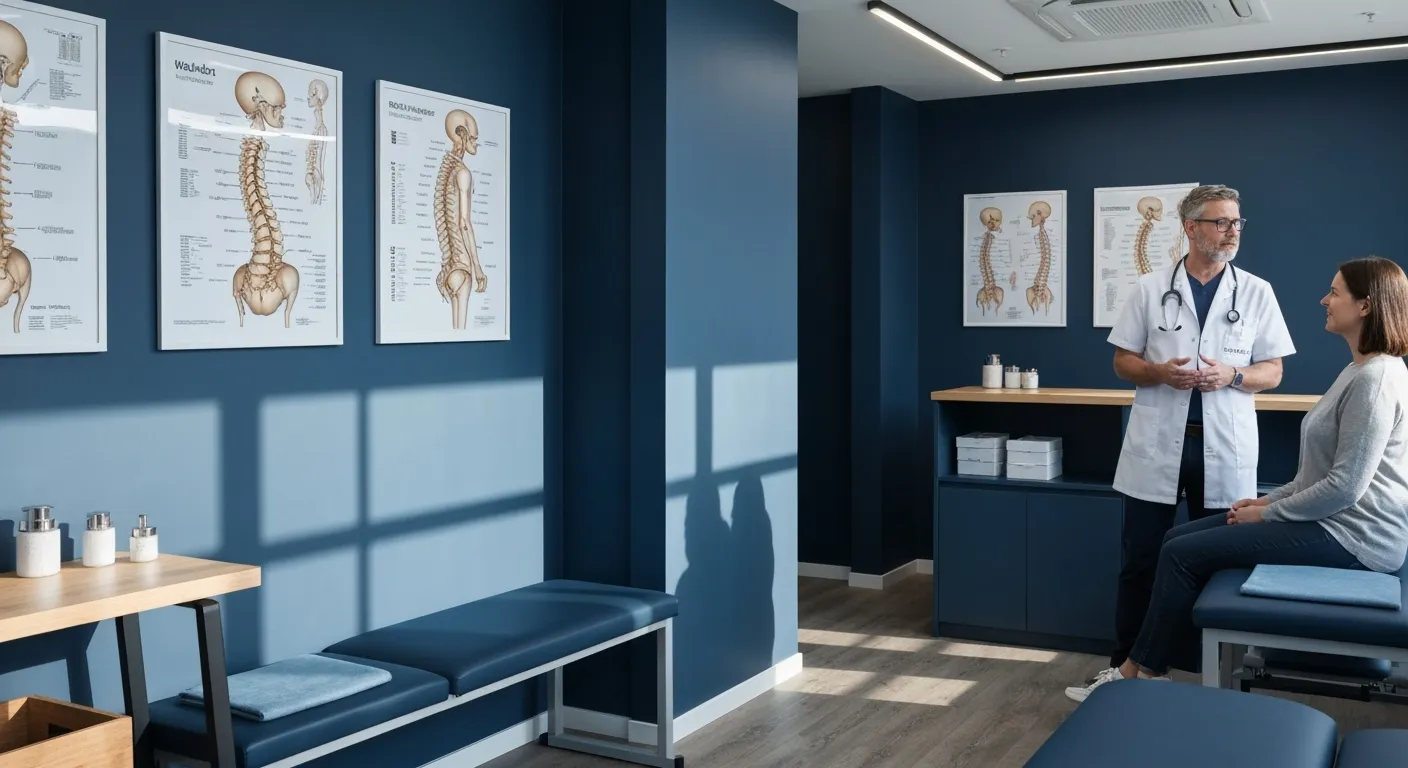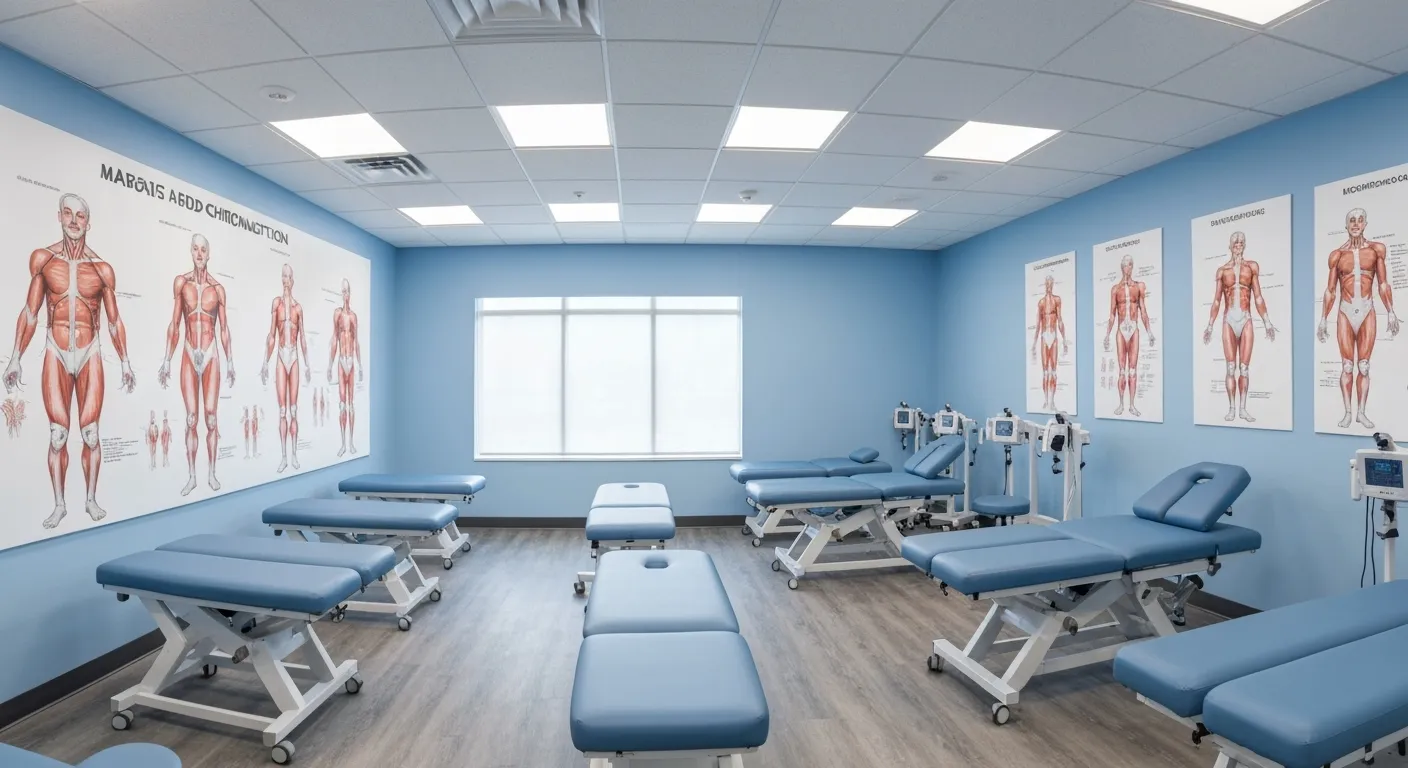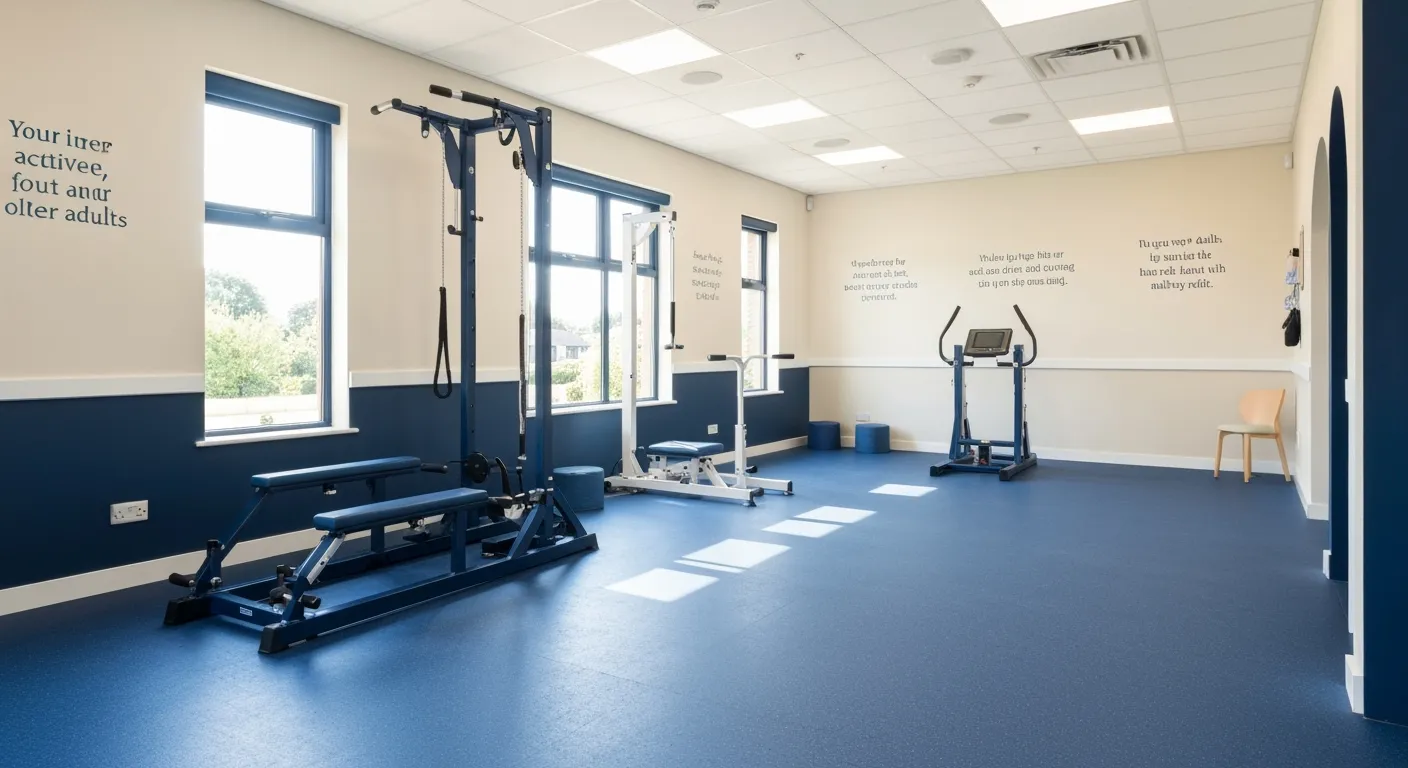Success Stories: How Chiropractic Treatments Changed Lives
October 1, 2025
16 min

Discovering the Impact of Chiropractic Care
Chiropractic treatments have emerged as a pivotal approach for many seeking relief from pain and enhanced well-being. Through real-life success stories, patients from diverse backgrounds reveal how tailored chiropractic care has transformed their lives by alleviating chronic pain, restoring mobility, and improving overall health. This article explores these inspiring journeys, highlighting the holistic benefits and profound impact that chiropractic interventions can have on quality of life.
Chiropractic Care: A Pathway to Alleviating Chronic Pain

How have chiropractic treatments positively impacted individuals' lives?
Patients across various age groups and condition spectrums have experienced remarkable improvements through chiropractic care. From office workers like John, who found relief from chronic lower back pain, to athletes such as David, who recovered from sports-related injuries, the benefits are extensive.
Chiropractic interventions—particularly spinal adjustments—have been shown to reduce pain related to conditions like sciatica, migraines, and joint issues. For example, Sarah was able to manage her upper back and neck pain better, enabling her to engage more fully with her family and reduce her stress.
Numerous cases highlight how patients regained mobility and confidence after treatments that realigned their spines, alleviated nerve pressure, and decreased inflammation. Linda, for instance, was able to participate in social activities again after targeted adjustments eased her sciatic nerve pain.
Many patients also reported a decrease in their dependence on medications. This reduction is especially notable in cases of headaches and migraines, where chiropractic care often provides symptom relief without the need for drugs.
Furthermore, improvements in functional health are common. Emily, an athletic woman, enhanced her running performance thanks to chiropractic adjustments that optimized her posture, while others like Jack recovered from serious accidents, avoiding surgical interventions.
Clinical studies support the efficacy of these treatments, showing increased patient satisfaction and long-lasting relief when combined with lifestyle changes and exercises. Overall, chiropractic care acts as a natural, non-invasive pathway to better health and mobility.
Real-Life Success Stories Demonstrating Chiropractic Benefits

What are some real-life success stories that demonstrate the benefits and outcomes of chiropractic care?
Chiropractic care has helped many individuals overcome various health issues, leading to remarkable improvements in their daily lives. Patients across different age groups, lifestyles, and health conditions have reported meaningful relief and enhanced well-being.
One notable example is John, a 45-year-old office worker who suffered from chronic lower back pain. After starting chiropractic treatments, which included spinal adjustments, therapeutic exercises, and lifestyle advice, he experienced significant pain relief. This enabled him to return to his daily activities with renewed energy.
Sarah, a 32-year-old mother, struggled with persistent upper back and neck pain. Through a personalized treatment plan involving spinal adjustments, postural training, and stress management techniques, she was able to reduce her discomfort. This improvement allowed her to engage more fully with her family and enjoy everyday moments.
Another inspiring story involves Margaret, a 70-year-old retiree who was dealing with lower back pain and limited mobility. Attending an educational seminar on chiropractic care, she began regular treatments, which helped alleviate her pain and restore her ability to participate in activities like gardening and dancing.
For athletes like David, chiropractic care was a vital part of recovery from a lower back injury. Adjustments, targeted exercises, and lifestyle changes not only facilitated a full recovery but also enhanced his athletic performance beyond previous levels.
In addition, individuals suffering from migraines have also found relief. Brian’s severe migraines decreased in frequency and intensity after upper cervical chiropractic care combined with lifestyle modifications like reducing screen time and practicing relaxation techniques.
Patients with nerve-related issues such as Linda’s sciatic nerve pain reported substantial improvements following targeted adjustments that improved spine alignment and decompression, significantly boosting her mobility and social participation.
Cases like Jack’s show how chiropractic treatments can help realign the spine, reduce inflammation, and include strengthening exercises to recover from injuries such as car accidents—sometimes avoiding surgery altogether.
Beyond physical conditions, chiropractic care has also contributed to better mental and emotional health. Mark, who sat long hours at work, developed improved posture and reduced back strain, which translated into a better work and personal life.
These stories, along with many others, highlight how chiropractic care supports natural healing, improves function, and restores quality of life across diverse populations. Clinical studies backing these outcomes emphasize the effectiveness of manual adjustments in realigning the body, alleviating nerve pressure, and promoting health without reliance on medication.
From children with cerebral palsy to seniors with degenerative spine issues, chiropractic care has fostered mobility and hope. Overall, these testimonials showcase the broad potential of chiropractic treatments to produce positive, lasting changes in health and daily living.
Health Benefits and Life Changes Resulting from Chiropractic Care
What health benefits and life changes can result from chiropractic care?
Chiropractic care provides a wide range of health improvements that can significantly enhance a person’s quality of life. Many patients experience notable pain relief from common issues such as lower back pain, neck pain, and headaches. For instance, individuals like John and Sarah found relief from chronic pain through treatments combining spinal adjustments, personalized exercises, and lifestyle advice.
In addition to pain management, chiropractic care often improves posture and aligns the spine properly. This correction can reduce strain on muscles and joints, leading to better overall body function and a noticeable decrease in symptoms related to postural problems. Patients like Mark and Emily reported better posture, increased mobility, and less discomfort after treatment.
Enhanced nerve and joint function is another significant benefit. Adjustments help alleviate nerve pressure and improve mobility in joints. Linda, for example, found relief from sciatic nerve pain through targeted spinal adjustments, which restored her ability to participate in social and family activities.
Chronic conditions, such as scoliosis, osteoarthritis, and muscular imbalances, can also benefit from chiropractic interventions. Some patients have seen improvements in spinal curvature, joint health, and muscular tightness. For example, a patient with scoliosis experienced a reduction in spinal curvature after years of treatment, reflecting the potential for long-term positive changes.
Long-term wellness and lifestyle improvements are common among chiropractic patients. The emphasis on patient education, combined with customized exercises and ergonomic advice, often leads to sustained health benefits. Many individuals adopt healthier habits, reduce reliance on medications, and enjoy increased physical activity. Athletes like David and Sarah enhanced their athletic performance and daily energy levels, demonstrating how chiropractic care can support active, healthier lifestyles.
Overall, chiropractic treatment can be a crucial part of maintaining long-term health, reducing pain, improving function, and supporting a more active and pain-free life.
Chiropractic Treatments and Their Positive Effect on Wellbeing

How do chiropractic treatments impact patients' wellbeing based on insights and stories?
Chiropractic care has demonstrated significant benefits for both physical and mental health. Patients like John, Sarah, and Margaret share how chiropractic adjustments have alleviated chronic pain such as lower back, upper back, neck pain, and even headaches. These physical improvements often lead to better sleep, increased mobility, and a more active lifestyle.
Beyond relieving pain, chiropractic treatments influence emotional health. Many patients experience reduced stress and muscle tension after sessions, helping to promote relaxation. This relaxation stimulates the release of hormones like oxytocin and endorphins, which are natural mood enhancers.
For example, Linda’s sciatic nerve pain was relieved through targeted adjustments, allowing her to again take part in family activities, which boosts emotional wellbeing. Similarly, patients with migraines, like Brian, reported fewer and less intense headaches, improving their overall quality of life. These stories underscore how chiropractic care supports both body and mind.
Effects on stress reduction and hormone release
Chiropractic adjustments can activate the parasympathetic nervous system, responsible for relaxation. This activation helps reduce cortisol, the stress hormone, leading to decreased anxiety and improved mental stability. Patients such as Emily, who experienced chronic back pain and sleep issues, reported that regular chiropractic care helped them feel calmer and more focused.
Physical benefits combine with hormonal effects to foster a state of well-being. This holistic approach encourages better emotional health and resilience.
How chiropractic treatment improves sleep quality and mental clarity
Many individuals like Sarah and Mark have noted improvements in sleep and mental clarity after chiropractic adjustments. Relieving nerve and joint tension helps the nervous system function more smoothly, promoting restful sleep and sharper focus during the day.
Patients often find that a reduction in physical discomfort translates into less mental fatigue and clearer thinking. Enhanced sleep and mental function create a positive cycle, supporting long-term health.
Impact on anxiety, depression, and headache symptoms
Chiropractic care has been linked to reductions in anxiety, depression, and headache severity. For example, patients with chronic migraines or tension headaches report fewer episodes post-treatment. By correcting spinal misalignments, chiropractic care reduces nerve impingements that can contribute to headache pain and emotional distress.
In addition, improvements in posture, spinal alignment, and nervous system function contribute to overall mood enhancement. When pain diminishes and body function stabilizes, patients often experience increased confidence and happiness.
| Benefits Observed | Conditions Improved | Additional Notes |
|---|---|---|
| Pain relief | Back pain, headaches, nerve issues | Enhances mobility and activity levels |
| Stress reduction | Muscle tension, anxiety | Hormonal balance improves mood |
| Better sleep | Insomnia, fatigue | Supports mental clarity and focus |
| Emotional stability | Depression, mood swings | Overall wellbeing is strengthened |
This collection of stories and studies highlights the comprehensive positive impact chiropractic treatments have on mental and physical health, promoting a healthier, more balanced life.
Detailed Case Studies Illustrating Chiropractic Effectiveness
What do case studies and detailed examples reveal about how chiropractic care has helped individuals?
Case studies and detailed examples highlight the versatility and effectiveness of chiropractic treatments in improving various health conditions. They demonstrate that chiropractic care is not only beneficial for pain relief but also can contribute to restoring mobility, enhancing neurological function, and promoting overall well-being.
For example, patients with neurological issues such as Bell's palsy experienced significant recovery after chiropractic interventions. These treatments helped improve facial nerve function, reducing symptoms like muscle weakness and facial asymmetry. In musculoskeletal cases, individuals suffering from chronic back or neck pain often reported substantial pain reduction, increased range of motion, and improved quality of life.
Some notable cases include a teenage girl with debilitating illness making a rapid recovery within a month, and a family’s son with a head injury who fully recovered within three weeks. These examples underscore the potential of chiropractic care to facilitate swift health improvements, especially when combined with other therapies.
Multidisciplinary approaches are often employed, blending spinal adjustments with exercises, lifestyle modifications, and sometimes medication reduction. For instance, patients with scoliosis showed improvement in spinal curvature after years of consistent chiropractic care, with evidence visible in X-ray imaging.
Clinical evidence supports these outcomes, indicating that chiropractic methods such as spinal manipulations, soft tissue therapies, and patient education contribute to lasting health benefits. Overall, case reports affirm that chiropractic care can lead to meaningful improvements across a range of conditions, emphasizing its role as a valuable component of comprehensive healthcare.
Improving Quality of Life through Chiropractic Care
How do chiropractic treatments affect quality of life and overall health outcomes?
Chiropractic treatments can significantly enhance everyday well-being by addressing pain and improving overall body function. Many patients report substantial reductions in chronic pain, especially in the lower back, neck, and head areas. For example, individuals suffering from migraines or sciatic nerve pain often experience notable relief, which enables them to participate in daily activities more comfortably.
Beyond pain relief, chiropractic care has been linked to better sleep quality. Patients like Sarah, who struggled with persistent back pain, found that regular adjustments and personalized exercises helped her sleep more peacefully. This not only improved her rest but also boosted her energy levels during the day.
Chiropractic interventions also support social and physical engagements. Linda, who suffered from sciatic nerve pain, regained mobility, allowing her to enjoy family outings and social events once more. Similarly, Margaret, an older adult, resumed activities like gardening and dancing thanks to improved mobility after her treatments.
Mental health benefits are also notable. Several patients, including Mark who experienced sleep issues, reported reduced stress and increased mental clarity after chiropractic sessions focused on spinal alignment. Importantly, reducing nerve pressure and restoring proper nervous system function can promote a sense of well-being.
Furthermore, many patients experience long-term health improvements, including increased joint flexibility and decreased fatigue. This ongoing benefit is often enhanced when chiropractic care is combined with lifestyle changes such as ergonomic adjustments, stress management, and exercises.
Research supports these observations, with clinical studies showing that chiropractic care markedly improves quality of life. Patients report less pain, better mobility, and a broader sense of well-being, which collectively foster a healthier, more active lifestyle.
| Aspect of Improvement | Patient Examples | How It Helps | Additional Notes |
|---|---|---|---|
| Pain Reduction | John, Emily, Lisa | Less discomfort and ability to perform daily tasks | Often achieved through spinal adjustments and targeted therapies |
| Better Sleep | Mark | Restorative sleep, increased energy | Correlated with spinal realignment and nervous system health |
| Enhanced Mobility | Margaret, Jack | Participation in activities like gardening and sports | Achieved via spine alignment and strengthening exercises |
| Mental Well-being | Sarah, Mark | Reduced stress, increased focus | Improved spinal health supports nervous system function |
| Long-term Health | All patients | Sustained pain relief, improved posture | Supplemented with lifestyle modifications |
This holistic approach, emphasizing personalized treatment plans and patient education, plays a vital role in promoting meaningful health outcomes. Chiropractic care’s ability to improve quality of life extends beyond mere symptom relief, fostering resilient health and well-being over time.
Chiropractic Care Supporting Athletic Recovery and Performance

How does chiropractic care assist athletes in recovering from sports injuries?
Many athletes turn to chiropractic treatments for faster recovery after injuries. For example, a 30-year-old athlete recovered from a lower back injury using chiropractic adjustments, targeted exercises, and lifestyle changes. This approach helped reduce inflammation and realign the spine, allowing a quicker return to sports.
Can chiropractic adjustments help improve athletic performance?
Absolutely. Chiropractic techniques such as spinal adjustments and postural training can optimize an athlete’s body mechanics. Emily, a runner, was able to run faster and longer after chiropractic sessions that improved her posture and minimized joint impact. These adjustments help athletes move more efficiently and confidently.
What are some patient stories showing improved stamina and mobility?
Sarah, a mother in her thirties, experienced fewer back and neck pains after personalized chiropractic care, leading to greater energy and better sleep. Jack, involved in physical activities after recovering from a car accident, regained mobility and strength through chiropractic treatments and exercises. These stories highlight how chiropractic care enhances overall stamina and functional mobility.
How does chiropractic care contribute to injury prevention?
Preventing injuries is a significant benefit of chiropractic treatment. Athletes like John, a professional runner, improved his knee health and endurance through spinal adjustments and stretching. Proper spinal alignment and core strengthening exercises reduce the risk of future injuries and improve athletic longevity.
| Patient | Condition | Treatment Focus | Result & Impact |
|---|---|---|---|
| Sarah | Chronic back pain | Adjustments, exercises | More energy, better sleep |
| Jack | Post-accident mobility loss | Realignment, exercises | Restored movement and strength |
| Emily | Running performance | Posture correction, joint adjustment | Faster, longer runs |
| John | Knee pain | Spinal adjustments, stretching | Better endurance, fewer injuries |
Chiropractic care plays a vital role in not only recovering from existing sports injuries but also enhancing athletic performance and preventing future problems. Through personalized adjustments and targeted exercises, athletes of all levels can achieve greater resilience, mobility, and success in their activities.
Personalized Treatment Plans: The Core of Chiropractic Success
How do individualized adjustments and exercise regimens contribute to chiropractic success?
Chiropractic care is tailored to each patient’s specific needs, addressing unique issues like misalignments or nerve impingements. For example, patients like John, a professional runner, and Linda, with sciatic nerve pain, have seen remarkable improvements by receiving adjustments that target their particular spinal problems. Customized exercises help reinforce correction and improve resilience, making treatment more effective.
Why is patient education and lifestyle advice essential?
Educating patients about posture, ergonomics, and activity modifications is vital for maintaining benefits long-term. Mark, who works long hours sitting at a desk, improved his posture and reduced back strain through ergonomic advice and core exercises. Lifestyle tips, like stress management for Sarah, also complement adjustments and ensure sustained health gains.
How do techniques like Graston and myofascial therapy enhance treatment?
These advanced therapies are used to treat soft tissue issues, reduce muscle tightness, and improve movement. For instance, techniques such as Graston’s instrument-assisted soft tissue mobilization can aid in healing muscle strains and fascial restrictions. Incorporating these methods can accelerate recovery for conditions like fibromyalgia or muscle injuries.
What is the role of chiropractic care across different age groups and conditions?
Chiropractic treatment benefits a wide age range—from children to seniors—by addressing conditions like cerebral palsy in adolescents or arthritis in older adults. Margaret, a 70-year-old retiree, regained mobility through targeted care, showing that age isn't a barrier. For children and teenagers, gentle adjustments can support development and recovery from injuries.
| Patient Group | Common Conditions Treated | Typical Techniques Used | Notable Outcomes |
|---|---|---|---|
| Children and Teenagers | Developmental issues, injuries | Gentle adjustments, soft tissue therapies | Improved gait, reduced pain |
| Adults | Back pain, sports injuries, headaches | Spinal adjustments, Graston, exercises | Reduced pain, better performance |
| Seniors | Arthritis, mobility issues | Gentle adjustments, postural training | Increased mobility, quality of life |
This personalized approach, combining various techniques and patient education, forms the foundation of successful chiropractic care that adapts to individual needs across all ages and conditions.
Chiropractic Care Beyond Pain: Supporting Neurological and Systemic Health
How does chiropractic care help improve neurological conditions like cerebral palsy?
Chiropractic treatment can have a positive impact on neurological health, especially in conditions such as cerebral palsy (CP). For instance, a 14-year-old boy with CP and a brain injury showed remarkable progress in gait and balance after intensive chiropractic care. This treatment aimed to realign the spine, reduce nerve pressure, and enhance nervous system function. Over time, these adjustments helped improve mobility and motivated the patient by showing tangible improvements.
Can chiropractic care provide symptom relief in chronic concussion and Bell’s palsy?
Many patients suffering from neurological symptoms like those caused by concussions or Bell’s palsy have experienced significant relief after chiropractic treatments. For example, a chronic concussion patient reported a resolution of symptoms such as depression, memory loss, balance issues, and disorientation following various therapies, including chiropractic adjustments. Similarly, a family’s son with a head injury recovered completely within three weeks, with symptoms such as visual disturbances and floaters resolving much faster than expected medical timelines.
What are the holistic benefits of chiropractic care for mental clarity and immune function?
Chiropractic adjustments are believed to support overall health by promoting better nervous system function. Patients have reported improvements like better sleep, increased energy, and enhanced immune responses following treatment. For instance, a patient with lifelong migraines experienced not only relief from headaches but also improvements in sleep quality and blood pressure, along with a reduction in medication use.
How does a multidisciplinary approach enhance patient outcomes?
Chiropractic care often integrates methods like physiotherapy, massage, and nutritional advice to address complex health issues. Dr. Anthony Tsai’s treatments at ChiroWorks Care Center, for example, have helped patients with severe lower back pain and nerve impingements return to normal activities. This multidisciplinary, knowledge-based approach ensures personalized care tailored to each patient’s unique needs, offering sustainable health benefits beyond mere symptom management.
| Condition/Benefit | Treatment Approach | Outcomes & Patient Feedback |
|---|---|---|
| Cerebral palsy | Intensive chiropractic adjustments | Improved gait, balance, motivation |
| Concussion | Multiple therapies including adjustments | Symptom relief, reduced depression and memory issues |
| Bell’s Palsy | Circulatory and nerve-focused care | Nerve function restored, facial asymmetry reduced |
| Migraines | Adjustments & lifestyle changes | No migraines, better sleep, less medication |
| General health | Multidisciplinary care | Enhanced immune system, better energy, improved mental clarity |
By supporting nervous system health through precise adjustments and comprehensive care, chiropractic treatment can significantly contribute to neurological and systemic wellness.
Empowering Patients: Education and Long-Term Health Maintenance

Patient empowerment through knowledge
Many patients find long-lasting benefits from chiropractic care when they understand their conditions and the treatment process. Educational efforts by chiropractors help patients make informed decisions, understand the importance of posture, exercise, and lifestyle choices, and become active participants in their health.
Strategies for maintaining spinal health post-treatment
After initial chiropractic care, maintaining spinal health is essential. Patients are encouraged to adopt regular stretching routines, strengthen their core muscles, and practice good ergonomics at work and home. Follow-up adjustments and periodic check-ups can also help sustain improvements.
Lifestyle modifications complementing chiropractic care
Lifestyle adjustments significantly enhance treatment outcomes. This includes proper nutrition, stress management, regular physical activity, and avoiding prolonged sitting or poor ergonomic setups. Such modifications reduce strain on the spine and support ongoing healing.
Success in preventing future health issues
Patient education extends beyond immediate relief. Chiropractors often provide tips for injury prevention, posture correction, and stress reduction techniques, which help patients avoid future episodes of pain. Implementing these strategies fosters a proactive approach to long-term well-being.
| Strategy | Description | Benefits |
|---|---|---|
| Posture correction | Adjusting daily habits to maintain spinal alignment | Reduces strain and prevents pain |
| Exercise routines | Regular stretching and strengthening exercises | Supports spine stability and overall health |
| Ergonomic adjustments | Creating spine-friendly work and home environments | Minimizes risk of injury and discomfort |
| Lifestyle changes | Nutrition, stress, and activity modifications | Enhances recovery and prevents recurrence |
Proper patient education and lifestyle choices complement chiropractic treatments, leading to a healthier, more resilient spine and improved overall health.
Celebrating Life-Changing Chiropractic Successes
The powerful testimonials and clinical insights presented illuminate the transformative potential of chiropractic treatments across a vast spectrum of health challenges. From alleviating chronic pain and improving athletic performance to enhancing mental wellbeing and neurological function, chiropractic care demonstrates its ability to change lives profoundly. Personalized approaches combined with patient education and multidisciplinary methods ensure lasting benefits. As more individuals share their journeys of recovery and renewed vitality, the message is clear: chiropractic care stands as a safe, effective, and holistic pathway to improved health and elevated quality of life.
References
- How Chiropractic Care Transformed Back Pain Sufferers
- 15 Inspiring Success Stories from Patients Who Found a ...
- Success Stories: How Chiropractic Care Transformed Lives
- Chiropractic Pain Relief Success Stories | Charleston Chiro
- Success Stories - Neurologic Chiropractic Care
- Success Stories - Before & After Pictures
- PATIENT SUCCESS STORIES
- Success Stories & Patient Testimonials
Recent articles

Simple Lifestyle Adjustments to Maintain a Healthy Spine

Personalized Nutritional Counseling for Improved Health Outcomes

Exploring Non-Surgical Treatments for Spine-Related Conditions

An Introduction to Spinal Decompression for Sciatica Patients

Transformative Success Stories: Patient Experiences with Chiropractic Treatments

Why Chiropractic Care Is Essential for Back Pain Relief

Addressing Underlying Causes Versus Symptom Management in Pain Care

The Role of Nutrition in Enhancing Chiropractic Treatment Effectiveness

Sciatica Treatment Options: Is Spinal Decompression Right for You?

Lifestyle Tips to Maintain a Healthy Spine and Prevent Back Issues

The Synergy Between Physiotherapy and Chiropractic Treatments

What Happens During Your Initial Chiropractic Consultation

Effective Corrective Exercises for Sustainable Pain Management

Taking a Root Cause Approach to Chronic Pain Management

Holistic Pain Management Techniques Without Surgery

How Patient Success Stories Validate Chiropractic Care Benefits

Spinal Decompression: Innovative Treatment for Sciatic Nerve Pain

Spinal Decompression Therapy: A Non-Invasive Approach to Sciatica Relief

Exploring Holistic Approaches Beyond Surgery for Pain Relief

Practical Lifestyle Advice to Support a Healthy Spine Every Day

Corrective Exercise Routines Designed for Long-Term Pain Prevention

Real Patient Stories: Overcoming Chronic Pain with Chiropractic Care

Lifestyle Changes That Promote a Healthy Spine and Prevent Injury

How Addressing the Root Cause of Pain Leads to Lasting Relief

Non-Surgical Holistic Therapies to Manage Chronic Pain Effectively

Nutritional Counseling's Impact on Physical Health and Healing

Benefits of Regular Chiropractic Care for a Stronger Back

Your First Chiropractic Visit: What to Expect and How to Prepare

Patient Experiences: How Chiropractic Care Transformed Their Lives

Exploring Holistic, Non-Surgical Options for Pain Management

Combining Physiotherapy with Chiropractic Treatments for Enhanced Recovery

Holistic Treatments That Offer Alternatives to Surgery for Pain Relief

Corrective Exercise Strategies for Long-Term Spine Health

How Physiotherapy Complements Chiropractic Adjustments for Better Outcomes

First-Time Chiropractic Visitors: What You Should Know

Understanding the Importance of Treating Pain at Its Source

Adopting Lifestyle Changes to Support Your Spine's Wellness

Utilizing Physiotherapy to Enhance Chiropractic Treatment Outcomes

The Key Advantages of Chiropractic Care for Back Pain Sufferers

Why Focusing on Root Causes Improves Pain Treatment Success

Corrective Exercises That Promote Lasting Pain Relief and Mobility

Sciatica Relief Through Targeted Spinal Decompression Techniques

Preparing for Your First Chiropractic Appointment with Confidence

Healthy Lifestyle Habits for Maintaining Spinal Alignment

Success Stories Highlighting Chiropractic's Role in Pain Recovery

Top Benefits of Chiropractic Care for Chronic Back Pain

Nutrition Tips to Boost Your Overall Wellness and Recovery

How Chiropractic Care Alleviates Back Pain Naturally

How Nutritional Counseling Supports Overall Wellness and Spine Health

Step-by-Step Guide to Your First Visit with a Chiropractor

Using Nutrition to Support Chiropractic and Overall Wellness

Integrating Physiotherapy in Your Chiropractic Healing Journey

How Physiotherapy Complements Chiropractic Adjustments for Faster Healing

Lifestyle Tips for Maintaining a Healthy Spine and Preventing Back Pain

Heartwarming Patient Testimonials Highlighting Chiropractic Success

How Proper Nutrition Supports Chiropractic and Physiotherapy Treatments

Combining Physiotherapy and Chiropractic Treatments for Optimal Recovery

Why Chiropractic Treatments Are Effective for Managing Back Pain

Choosing a Chiropractor: Tips for Finding a Trusted Provider

Integrating Physiotherapy and Chiropractic: Benefits and What to Expect

How Tailored Corrective Exercises Can Aid in Pain Management

Chiropractic Care: A Proven Solution for Alleviating Back Pain

What to Expect at Your First Chiropractic Visit: A Comprehensive Guide

The Importance of Root Cause Analysis in Effective Pain Management

The Role of Corrective Exercises in Sustaining Pain-Free Living

Combining Chiropractic and Physiotherapy for Comprehensive Pain Relief

How Addressing Underlying Causes Improves Pain Treatment Effectiveness

Maintaining Spinal Health Through Lifestyle Changes and Preventive Care

Understanding the Benefits of Chiropractic Adjustments for Back Pain Sufferers

Spinal Decompression Therapy: A New Hope for Sciatica Relief

Lifestyle Recommendations to Support a Healthy Spine and Reduce Pain

Choosing the Right Chiropractor: Key Factors to Consider Before Your First Appointment

Non-Invasive Treatment Alternatives: A Holistic Approach to Pain Relief

Corrective Exercises to Support Long-Term Relief from Chronic Pain

Exploring Non-Surgical Approaches to Spine Health and Wellness

Tips for Daily Habits That Keep Your Spine Strong

Success Stories: How Chiropractic Treatments Changed Lives

Why Focusing on the Root Cause of Pain Leads to Better Outcomes

Nutritional Counseling and Its Impact on Overall Wellness and Recovery

Patient Testimonials That Showcase the Power of Chiropractic Care

Preparing for Your First Chiropractic Appointment: What You Need to Know

Holistic Treatment Options: Beyond Surgery for Pain Relief

Holistic Pain Relief Methods That Avoid Surgery

Nutritional Strategies for Supporting Spine Health and Recovery

First Chiropractic Visit: What Happens and How to Prepare

Chiropractic Patient Success Stories: Inspiring Journeys to Wellness

Effectiveness of Spinal Decompression Therapy in Managing Sciatic Nerve Pain

Addressing Pain at Its Source: Why Treating the Root Cause Matters

Corrective Exercise Programs Designed for Long-Term Pain Prevention

Healthy Lifestyle Advice for Maintaining Spinal Alignment

Understanding Spinal Decompression as a Treatment for Sciatica Pain

Benefits of Chiropractic Care Specifically for Back Pain Relief

Understanding Gait Analysis in Physiotherapy

The Difference Between Muscle Soreness and Dysfunction

Workplace Stress Statistics: How Muscle Tension Impacts Productivity

How Physiotherapy Improves Mobility for Seniors

How to Communicate Pain Levels to Your Therapist Effectively

Physiotherapy Interventions for Balance and Fall Prevention

How Physiotherapy Helps Post-Surgical Recovery

